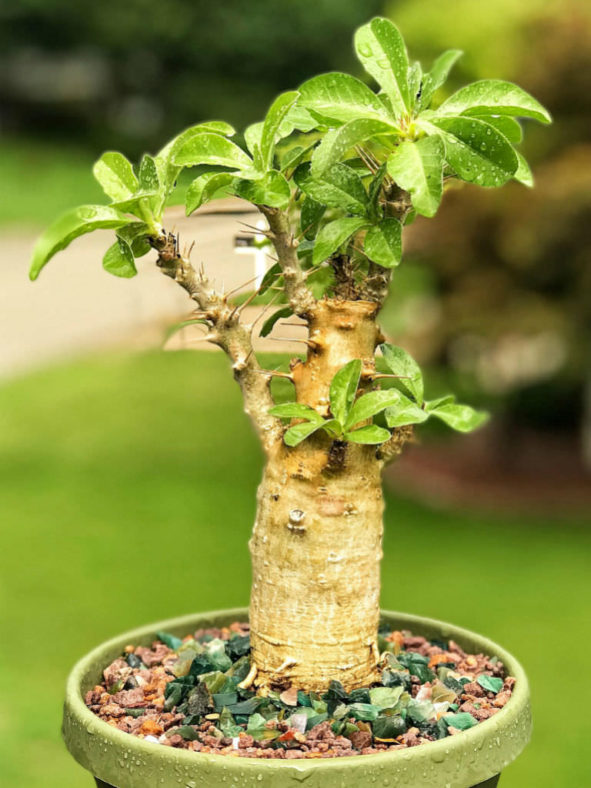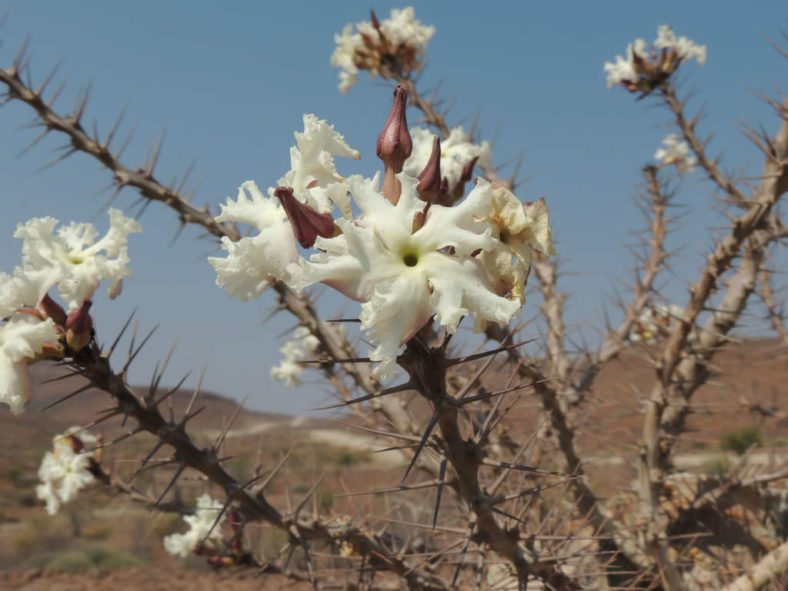Scientific Name
Pachypodium lealii Welw.
Common Name(s)
Bottle Tree
Synonym(s)
Pachypodium lealii subsp. lealii, Pachypodium giganteum
Scientific Classification
Family: Apocynaceae
Subfamily: Apocynoideae
Tribe: Malouetieae
Genus: Pachypodium
Origin
Pachypodium lealii is an endemic species of Namibia and southern Angola. It inhabits semi-desert areas and dry bushvelds, usually along rocky hillsides.
Description
Pachypodium lealii is a succulent shrub or small tree with a thick, bottle-shaped trunk that is almost branchless until the top. It can grow up to 20 feet (6 m) tall. The few branches are covered with rigid spines in clusters of three, which can reach up to 1 foot (30 cm) in length. The leaves are oblong, measuring up to 4 inches (10 cm) long and 1.6 inches (4 cm) wide, and they have short hairs on both surfaces.
The showy, fragrant flowers are white and cluster around the tips of the branches. They are present in the spring when the tree is leafless.

Hardiness
USDA hardiness zones 10a to 11b: from 30 °F (−1.1 °C) to 50 °F (+10 °C).
How to Grow and Care
The attractive flowers of Pachypodiums and the intriguing shapes of their swollen stems make them desirable for any garden. However, they are unsuitable for cold or damp gardens and very sensitive to frost. Therefore, if planted in a sunny garden that experiences occasional frost, they should be given a warm, sheltered position.
They make good accent plants in a rock garden, especially with other caudiciform succulent plants. All need full sun, lots of water (except during the dormant phase), and must have good drainage.
Almost all species are surprisingly adaptable to cultivation, changing their growing season when grown in the northern hemisphere.
These plants like ample light and grow best in full sun. Partial shade is tolerated but may discourage flowering. When grown in a glasshouse, ventilation is important. Abundant water is required during the growing season, depending on the species and specimen size. Allow the soil to dry out before adding more water.
Learn more at How to Grow and Care for Pachypodium.
Links
- Back to genus Pachypodium
- Succupedia: Browse succulents by Scientific Name, Common Name, Genus, Family, USDA Hardiness Zone, Origin, or cacti by Genus
Photo Gallery
Click on a photo to see a larger version.


